To Strip the Flesh is an anthology by author Oto Toda collecting several of her short works together. It includes several stories of varying length about love and being yourself and features a wonderful headlining story about a transgender character titled “To Strip the Flesh”.
To Strip the Flesh
Oto Toda
Viz Media
June 2022
CONTENT WARNING: This article contains animal hunting, butchering, violence, and mild body horror.
SPOILER WARNING: This article contains spoilers for the anthology To Strip The Flesh, and the beginning and end of the first story in the anthology.
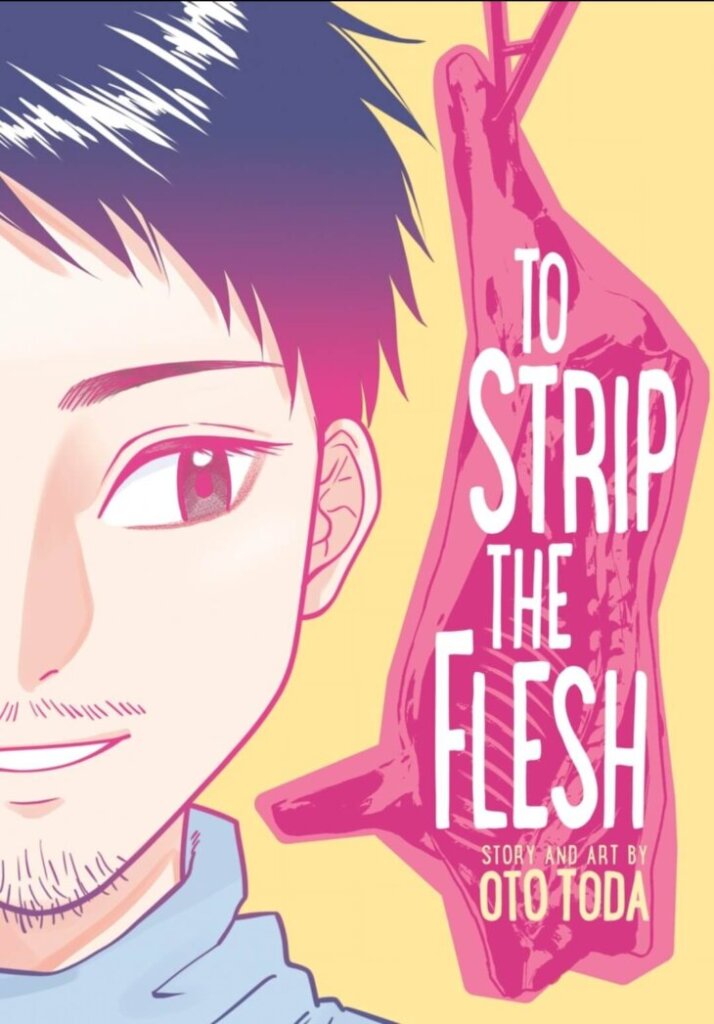
Welcome to Oto’s World

Oto’s art style is very romantic and versatile. The highlight of her style is her expert use of emotion and focus in designing a visual narrative. The esoteric design of the panels in certain areas and multifunctional use of screentones reveal a strong shojo influence in Toda’s work. This influence is also apparent in her visual focus on emotion as shown by the characters’ eyes, versus their body. That nod to the long history of shojo manga makes the art feel familiar to a well-read comic book fan.
However, she was also an assistant for the shonen manga Chainsaw Man by Tatsuki Fujimoto. This added to her versatility which can be seen in how flexible her style is throughout the anthology and also her ability to draw gruff older men and animal butchering.
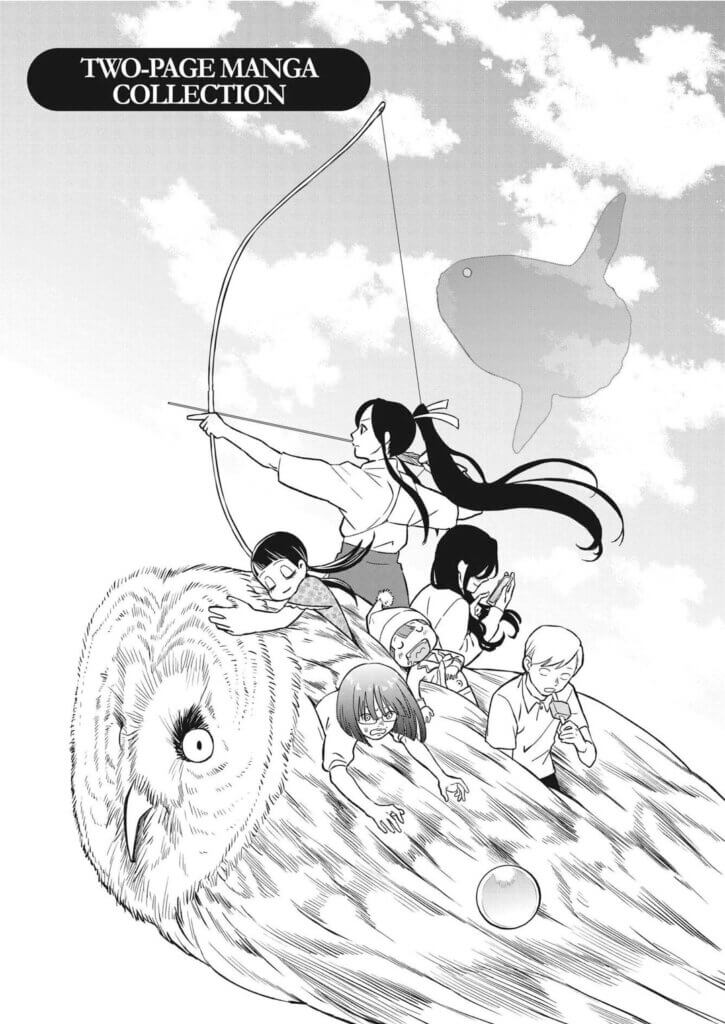
Throughout the anthology her technique changes, but it is always serving the narrative as an excellent example of style as a narrative design tool. This is best seen in the story “Hot Watermelon.”
The style starts off very sharp and heavy with lots of solid black to represent dark memories and hatching to add gritty detail and wavering shadows. Strict, boxy panels and diagonal panels trap the story in either the disarray of anger or the dullness of emotional repression.
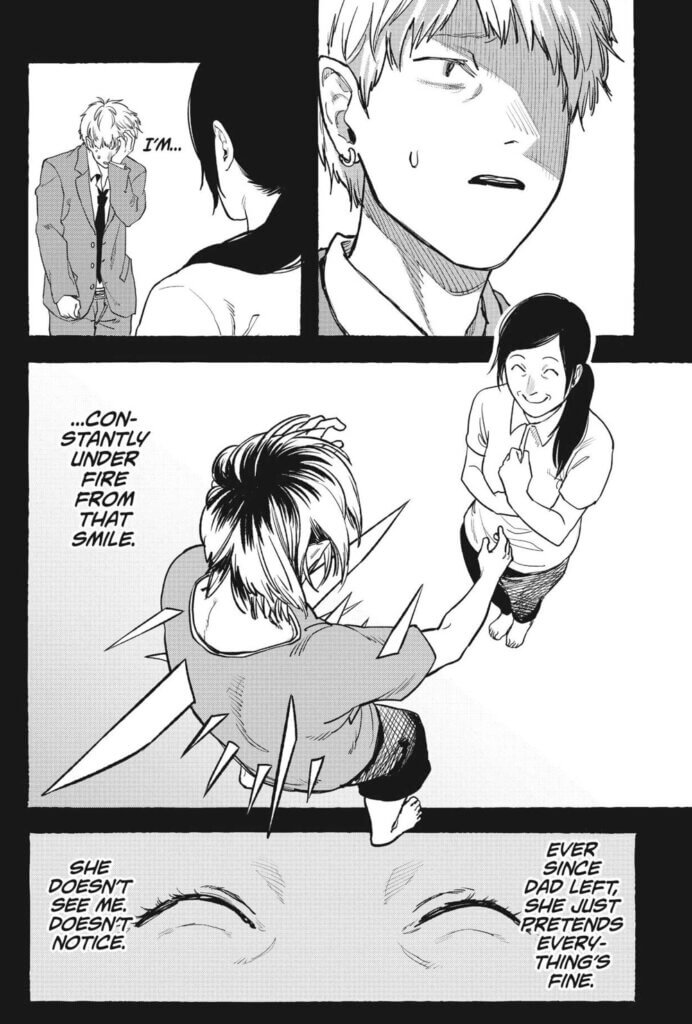
Then, Toda busts out her classic shojo style to show the gorgeous relief of childbirth and also to contrast against how the mother character appears to be when we are first introduced to her. The great part is, those same techniques that make the first half scary make the joy of childbirth seem like a euphoric dream when applied differently.

Oto also clearly has a lot of formal training in the Late Renaissance style (this is the style most commonly taught at most European-style schools of art) with “David in Love”, which felt like a school assignment! And, that feeling isn’t very much off the mark according to Toda herself in the bonus interview.
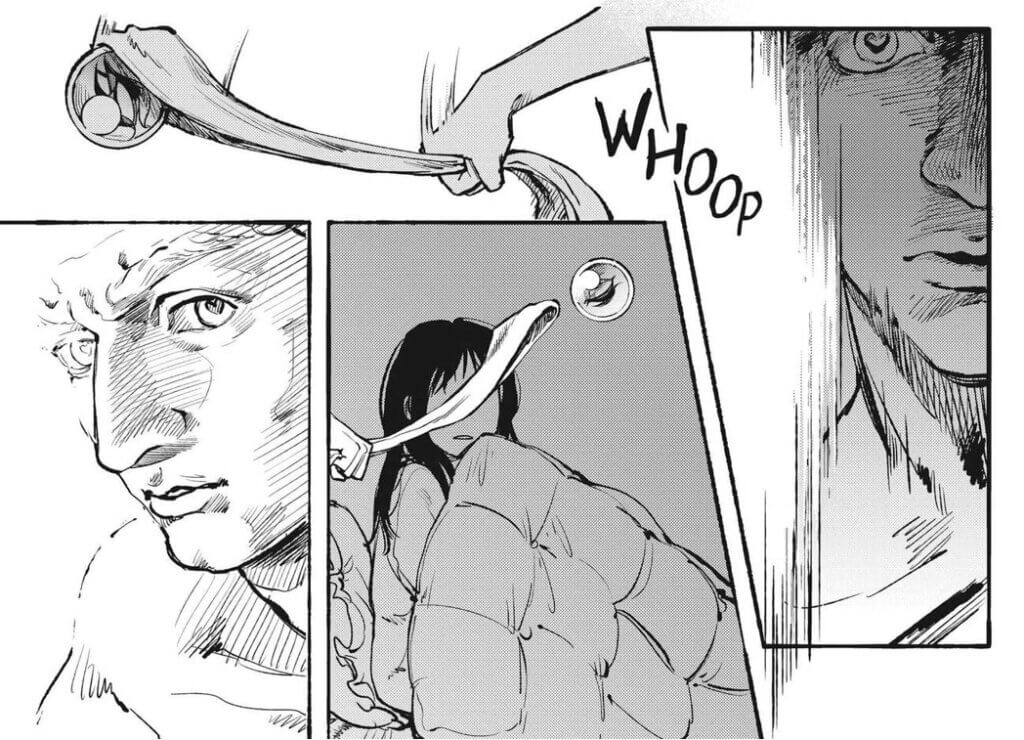
I also love her sense of cartooning. She understands that comics aren’t about the single image but the work as a whole. She effectively uses silhouette and line to push and pull focus in each panel and across the whole page.
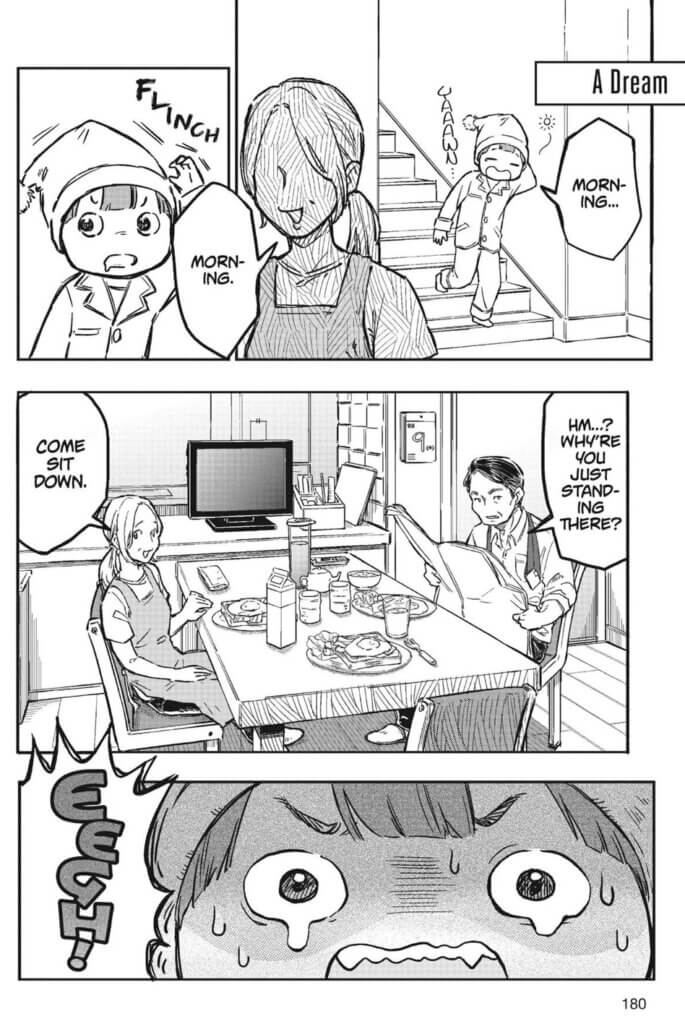
All together these elements give her art a very modern feeling that many young people will be familiar with. But it’s also versatile enough to be a strong tool when creating a narrative about gender, identity, and the emotional changes of life and love.
To Strip the Flesh
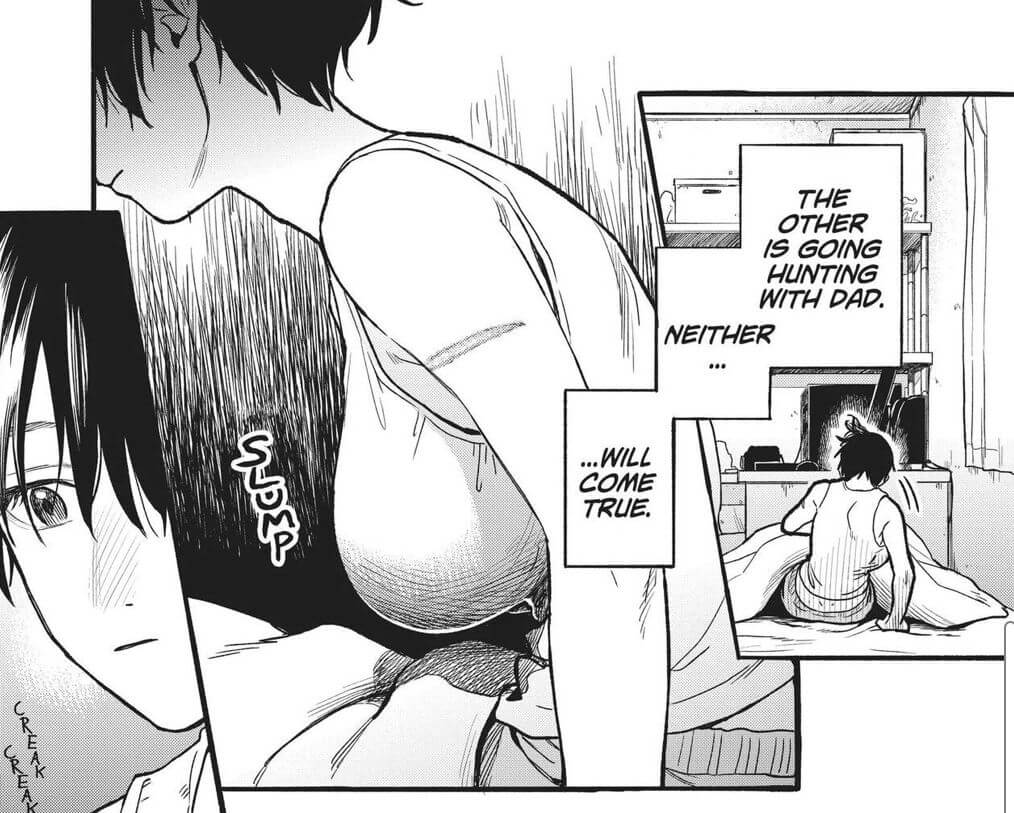
The first and most popular story in the anthology is called “To Strip the Flesh”. The main character is a trans man with large breasts named Chiaki, a youtuber who butchers meat on video that his father has hunted. When he hears that his father has colon cancer, he decides to fake a marriage and pretend to be married until his father dies. The theme is about living for yourself and not your parents.
The story uses the setting of rural Japan and the metaphor of hunting to drive home powerful emotions about bodily autonomy and freedom of self. Poignant imagery like Chiaki holding a knife to his breasts and his dream of going up the mountain to hunt with his father cut deep with visceral recollection of similar ideas for me personally.
In the bonus interview with popular gay sex worker and creator, Motigi, he says “‘To Strip The Flesh’ can only be written by someone who knows this pain.” To which the author, Oto, admits that she has had similar feelings of gender exploration but then decided she was fine in her current gender.
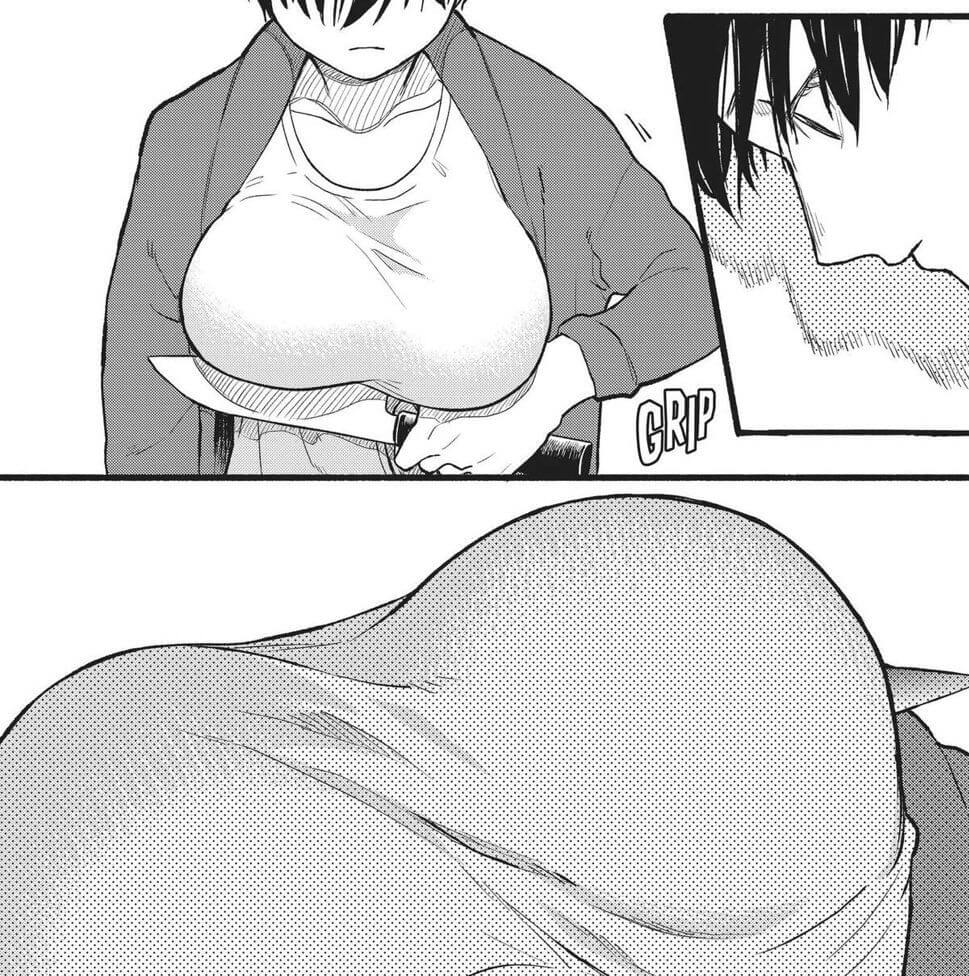
These two things to me are key to why the story holds up so well.
Being specific is much more powerful and universally appealing than simply trying to mush everyone together. And the author herself is interested in hunting and butchering and being a youtuber! So, the character of Chiaki really felt like someone I might know.
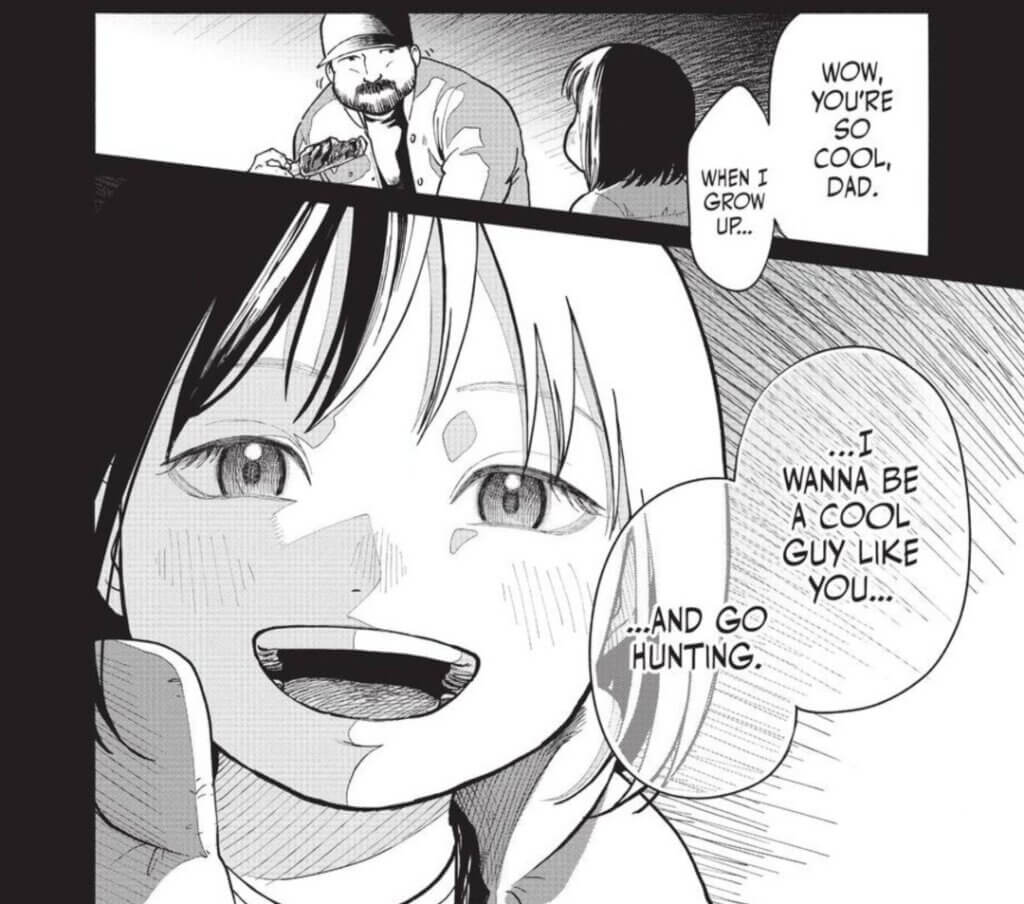
His defining characteristic that drives the plot is that he is someone who would try to sacrifice his happiness for his parents. Not because they are cruel, but because they love him so much. The shackles of love are just as powerful as hatred.

Toda successfully pulls this narrative off in a fresh and exciting way, not only because of what was said in the story, but also because of what was not said. The excellent character acting along with minimalist dialogue are all that’s needed for other trans people who have felt like Chiaki to understand what’s being said under the surface.
My favorite line is “it’s only while dad is alive”. This crushes Chiaki, obviously. To wish for the death of your beloved father, because you can’t be happy while he lives. That is something a lot of queer people are familiar with. It’s something I have thought as well. “Just die without being upset. At my own expense.” But at that moment in the story, I thought to myself, “Your father would hate it more if he knew you thought he had to die for you to be happy.” He was that kind of father. Full of love. The fact that this thought was placed so easily in my mind shows how good the writer is at conveying the father-daughter relationship. There is no animosity, just dutiful, back-breaking, love.
In the end, Chiaki gets upset at his father and yells at him,
“I’m the only one who knows what will make me happy!!”

He goes to Thailand, has his surgeries, and comes back. Chiaki tried to stifle himself, but he is not the type to let himself die as a woman, even for his parents. This is usually what drives trans people who manage to transition in one way or another. We look society directly in the face and we still turn the other way for our own health. We put our head on the chopping block just for a chance to finally be happy.
When Chiaki returns his father is not upset like he thought. His dad tells him not to live for your parents, you have to find your own happiness. His dad didn’t realize how easy it was to pressure a child, especially after Chiaki’s mom died. He was only thinking of keeping his child safe, not what would make him feel good.
He prohibited Chiaki from hunting especially after Chiaki followed him on a hunt once and almost got shot by him. The sadness in his father crushed Chiaki on the inside so he bottled up his emotions. He felt like he would never get to hunt with his dad. But after he returns from Thailand his dad encourages him, tells him to live for himself, and they go hunting and realize Chiaki’s lifelong dreams.
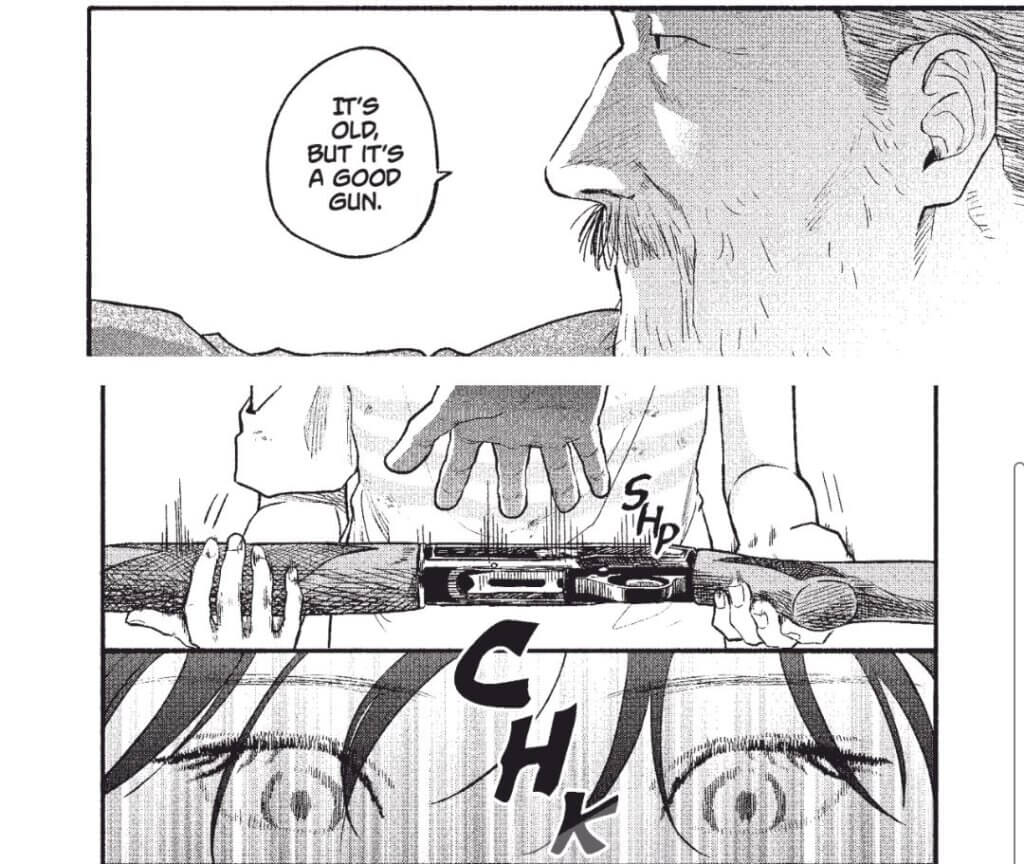
To me the father’s perspective really hit home at the end. He says to his dead wife’s photo that Chiaki is so lively when they go out hunting. He had thought that Chiaki wasn’t outgoing or emotional, but then reminisces on how lively he was as a child. This scene reminded me of my own experiences after I became trans. My mother was so surprised that I was so confident, upbeat, and outgoing!
Others who aren’t trans or who have never questioned their gender don’t realize how much we are holding back. For me, even I didn’t realize how much I couldn’t be myself. Seeing Chiaki go through this through his father’s eyes was so obvious to me, as a queer person who is going through similar breakthroughs with my parents. And parents of queer children can relate to this as well.

A lot of the more powerful points of this story are reliant on someone being familiar with the experience of being queer. To me, this is what it means to truly write for a queer audience. The story shows us being ourselves, good and bad, and the people that love us. For Chiaki it’s his father, a widower who is trying and failing to make his son happy. And his best friend, a straight cisgender guy who is clumsy with words but often does the best things for Chiaki because he cares about putting others first. And Chiaki’s doctor at the mental health clinic, who encourages him to live for himself and consider getting SRS (Sexual Reassignment Surgery).
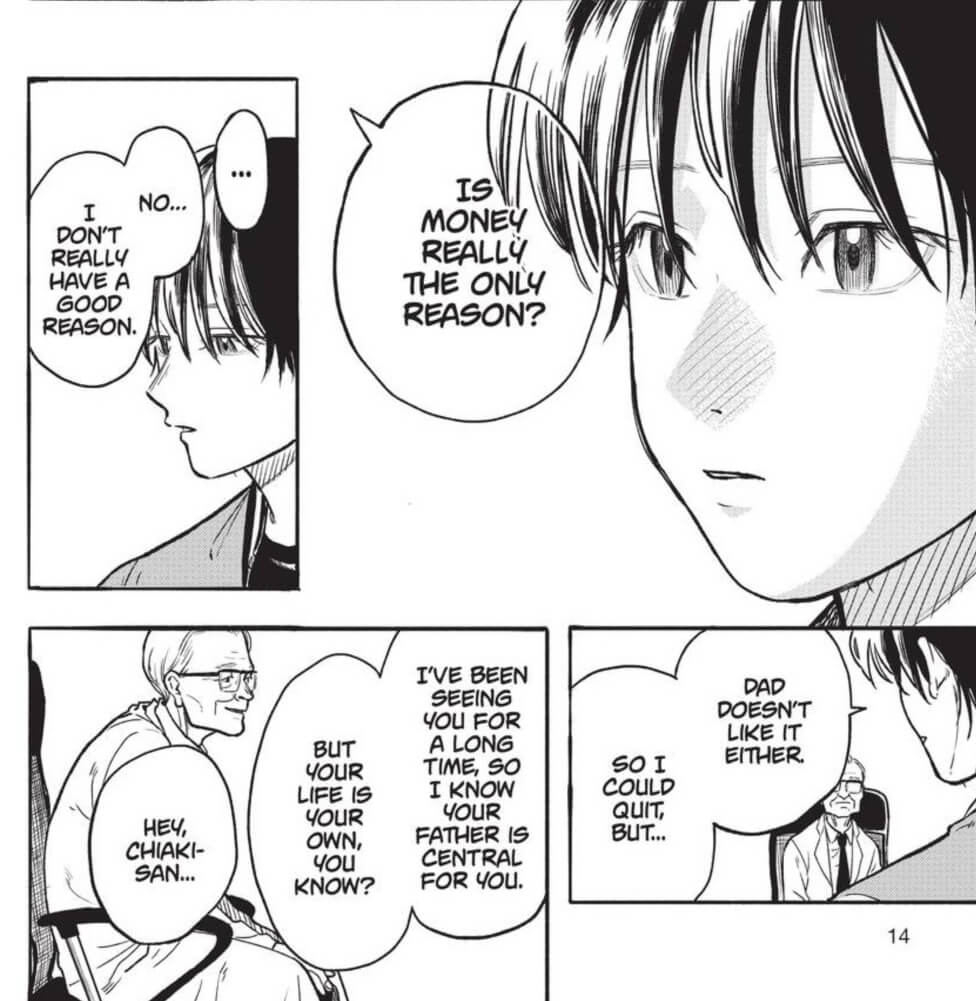
Overall, this anthology and the headlining story make me excited to see how Toda improves as a creator and hopefully serializes their own manga!
I highly recommend this book for anyone who loves unique and emotional stories about love!
The book is out now for purchase from Viz Media!
Buy it, or “I’m gonna cut you all to pieces!”
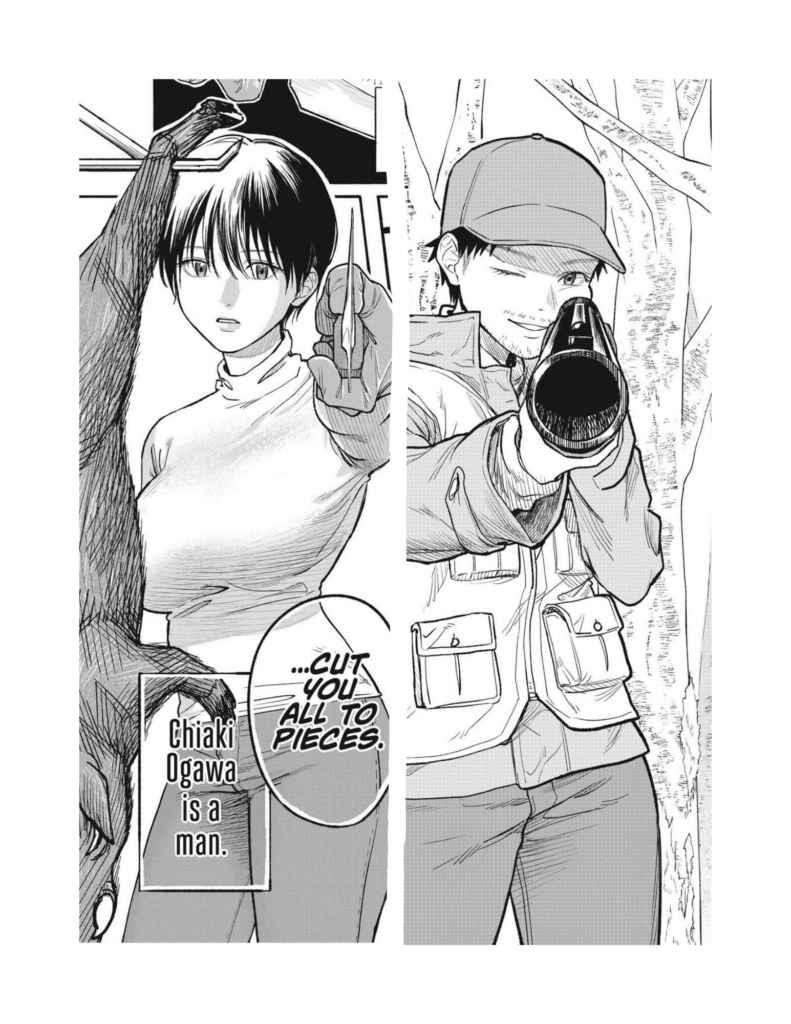

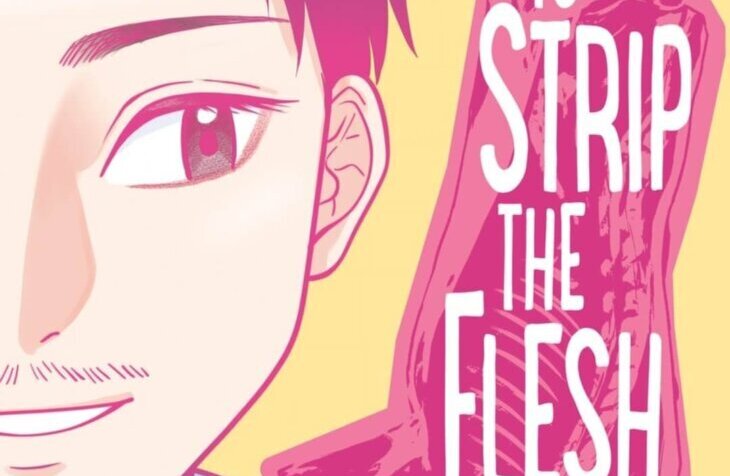
One thought on “REVIEW: “To Strip the Flesh” Cuts to the Bone”